Java Reference
In-Depth Information
sorted list
unsorted list
[0]
[1]
[2]
[3]
[4]
[5]
[6]
[7]
list
10
18
25
25
30
17
45
35
temp
23
FIGURE 14-10
List after copying
list[3]
into
list[4]
, and then
list[2]
into
list[3]
We now copy
temp
into
list[2]
. Figure 14-11 shows the resulting list.
u
nsorted
list
sorted list
[0]
[1]
[2]
[3]
[4]
[5]
[6]
[7]
list
10
18
23
25
30
17
45
35
copy
temp
23
FIGURE 14-11
List after copying
temp
into
list[2]
Now
list[0]...list[4]
is sorted and
list[5]...list[7]
is unsorted. We repeat
this process on the resulting list by moving the first element of the unsorted list into the
sorted list in the proper place.
From this discussion, it is clear that during the sorting phase the array containing the
list is divided into two sublists: sorted and unsorted. Elements in the sorted sublist
are sorted; elements in the unsorted sublist are to be moved to the sorted sublist in
their proper places one at a time. We use an index—say,
firstOutOfOrder
—to
point to the first element in the unsorted sublist. Initially,
firstOutOfOrder
is
initialized to
1
.
This discussion translates into the following pseudoalgorithm:
for
(firstOutOfOrder = 1; firstOutOfOrder < listLength;
firstOutOfOrder++)
if
(list[firstOutOfOrder] is less than list[firstOutOfOrder - 1])
{
1
4
copy list[firstOutOfOrder] into temp
initialize location to firstOutOfOrder

























Search WWH ::

Custom Search